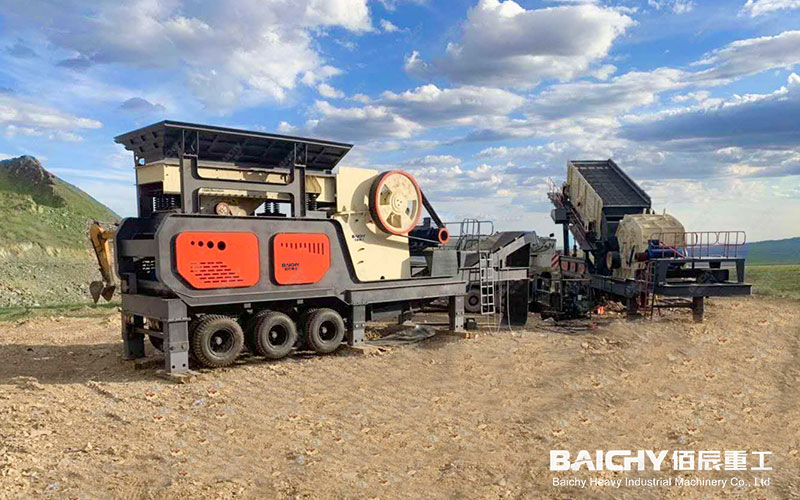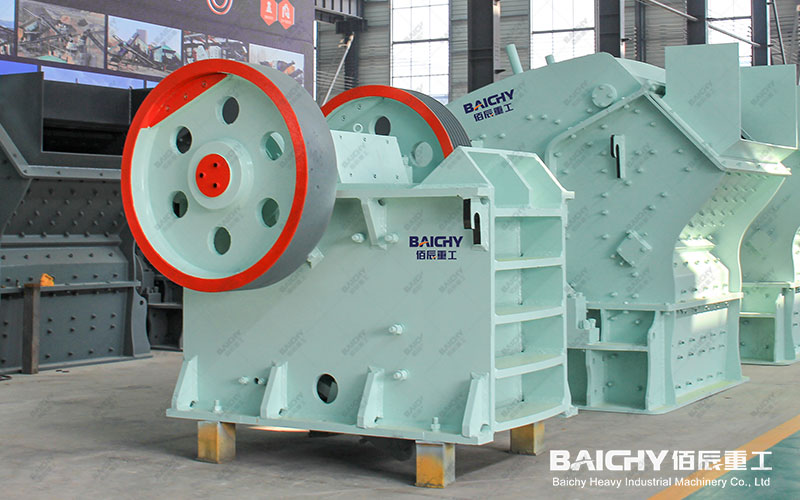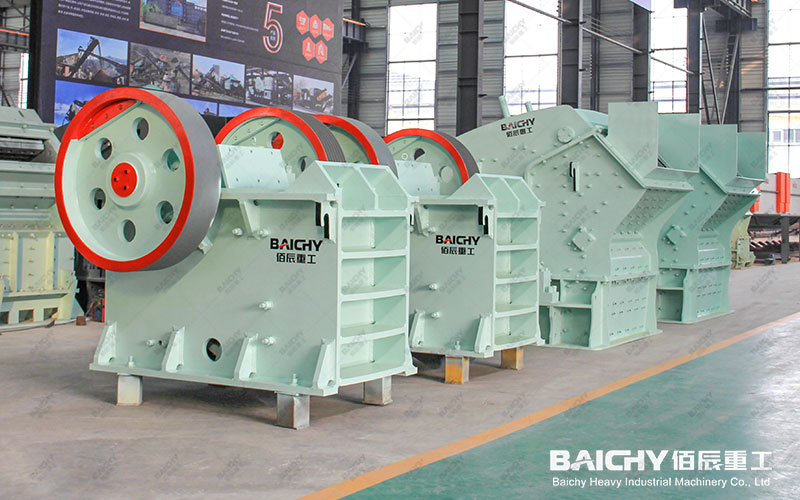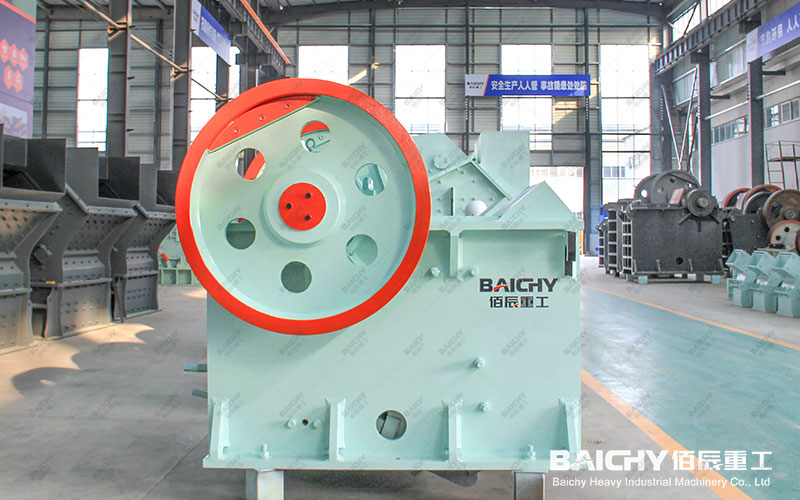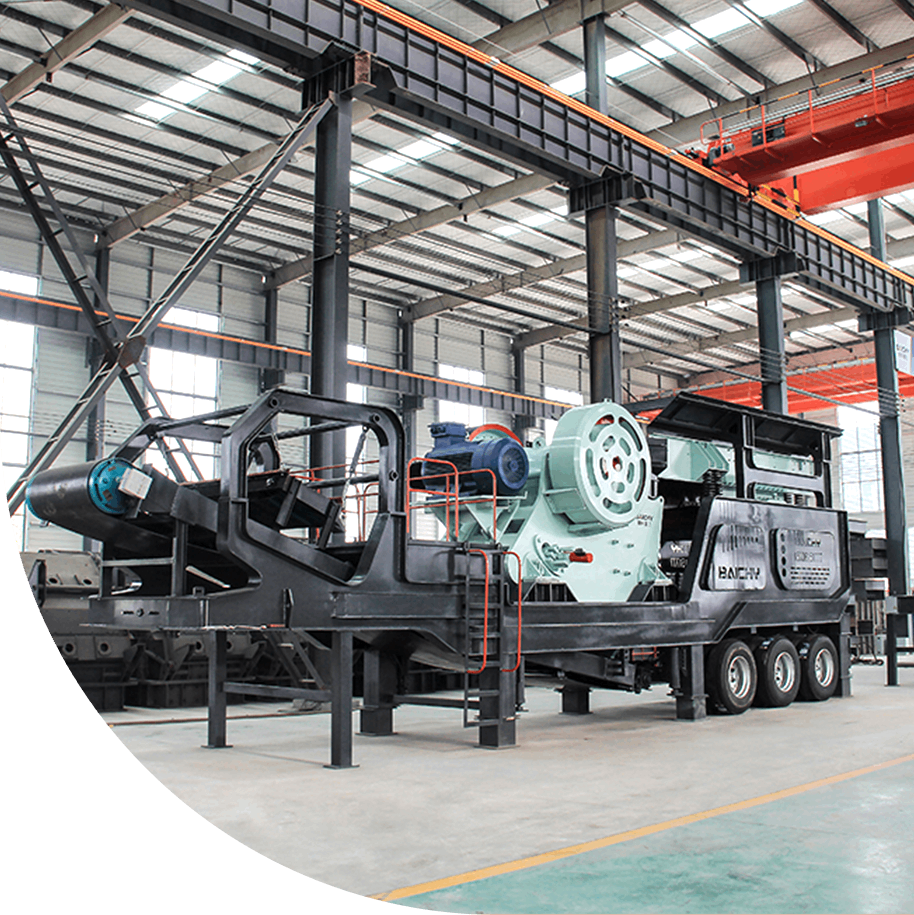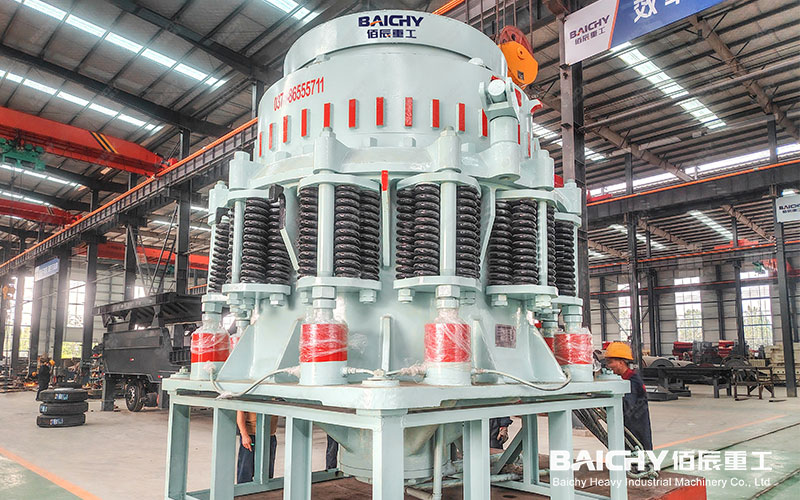
In modern mining, building materials, metallurgy, and other industries, material crushing is a crucial process. Among various crushing equipment, the Symons cone crusher is highly sought after for its sturdy structure, smooth operation, and superior efficiency. But have you ever wondered what intricate processes take place within this "steel behemoth" to break down hard rock into uniform particles? The answer lies in its core operating principle: "laminated crushing."
This article will provide a detailed "mechanical anatomy" and take you step-by-step through the interior of a Symons cone crusher, revealing its complete workflow from power generation to finished product discharge.
1. The Source of Efficiency: What is "Laminated Crushing"?
Before understanding the specific structure, it's important to first understand the revolutionary concept of "laminated crushing." It differs fundamentally from traditional single-particle crushing (such as jaw crushers, which rely primarily on jaws to squeeze inpidual pieces of material).
Laminated crushing, figuratively speaking, is "collective crushing within a layer." It ensures that the material fully fills the crushing chamber, forming a solid "lining." As the moving cone moves, the enormous compressive force exerted simultaneously on the entire material layer, squeezing, grinding, and crushing the materials against each other. This model offers significant advantages:
• Extremely high energy efficiency: Energy is concentrated on crushing the material, rather than wasted on ineffective friction and vibration, resulting in greater energy efficiency.
• Excellent product shape: The produced particles are mostly cubic, with low levels of flakes, making them an ideal choice for modern, high-standard concrete aggregates.
• Low overcrushing rate: This prevents repeated crushing of qualified particles, improving product quality and economic efficiency.
II. The "First Link" of Power Transmission: From Motor to Eccentric Sleeve
All movement begins with the electric motor. The motor transmits rotational power to the horizontal drive shaft below the equipment via a flexible V-belt or coupling. At the end of this drive shaft sits a pair of crucial spiral bevel gears.
• Key Action: These gears redirect the power transmission path 90 degrees, converting horizontal rotational motion into vertical rotational motion, thereby driving the eccentric sleeve above to initiate uniform rotation. "Eccentricity" is the core of this unique motion. The eccentric sleeve can be understood as a sleeve with an inner and outer center that are not aligned. It is this "eccentricity" that sets the stage for the subsequent crushing motion.
3. The Beating of the Heart: The "Oscillating Motion" of the Moving Cone
The moving cone is the component that directly performs the crushing task. It is mounted within the eccentric sleeve via the main shaft. As the eccentric sleeve rotates, the upper end of the main shaft is supported and fixed by spherical bearings, while the lower end is "pushed" by the eccentric sleeve in a circular motion. This creates a unique compound motion—oscillating motion—for the moving cone.
You can imagine it this way: the central axis of the moving cone does not move straight up and down, but rather traces a conical path with its top as the apex. This means that the surface of the moving cone periodically:
• Approaches the fixed cone (liner), exerting a significant compressive pressure on the material.
• Moves away from the fixed cone, providing space for the crushed material to fall.
This repetitive rotation, with a certain oscillating component, is the physical basis for achieving continuous and smooth lamination crushing.
IV. Crushing: Squeezing, Dropping, and Re-squeezing
The material is evenly fed from the top feed port into the annular crushing chamber formed by the rotating and fixed cones. This chamber gradually narrows from top to bottom, ensuring that the material undergoes multi-stage crushing.
1. Squeezing Stage: As the rotating cone swings toward the fixed cone, the volume of the crushing chamber decreases, and the material layer within is subjected to tremendous multi-dimensional squeezing pressure. At this point, the "laminated crushing" effect reaches its peak, and the material begins to break at its internal weak points under the intense pressure.
2. Discharge Stage: As the rotating cone swings away from the fixed cone, the volume of the crushing chamber increases, and the crushed material slides downward a distance under its own gravity. Simultaneously, the material to be crushed from above is replenished, preparing for the next squeeze.
Throughout its journey from inlet to outlet, the material undergoes multiple cycles of this "squeezing-dropping" cycle, achieving progressive crushing from large to small, ultimately achieving the desired particle size.
V. Particle Size Control: Discharge Port Adjustment and Finished Product Output
The ultimate goal of crushing is to obtain a product of a specified particle size. This control lies in the width of the discharge opening at the bottom of the crushing chamber. The discharge opening is the minimum gap between the movable cone and the bottom of the fixed cone.
• Particle size control: Only materials smaller than the discharge opening width can be discharged smoothly. Hydraulic or mechanical adjustment devices can raise or lower the movable cone, thereby changing the size of the discharge opening and flexibly controlling the maximum particle size of the final product.
• Automated protection: Modern Symons cone crushers are typically equipped with a hydraulic system that automatically relieves pressure when uncrushable objects (such as iron blocks) enter the crushing chamber, protecting the equipment from damage.
The Symons cone crusher is far more than a simple "hard-to-hard" solution. It is a highly efficient tool that integrates precision mechanical design (eccentric sleeve, gear drive) and advanced crushing concepts (laminated crushing). Its oscillating motion is the physical basis for achieving laminated crushing, which in turn is the inherent reason for its high efficiency, energy efficiency, and high-quality output.
Understanding its operating principles not only helps operators and maintenance personnel better use the equipment and extend its lifespan, but also allows us to deeply appreciate the wisdom and power of industrial machinery design. In today's pursuit of green manufacturing and sustainable development, efficient and energy-saving equipment such as Simmons cone crusher will undoubtedly continue to play an indispensable and key role in infrastructure construction.

The Symons cone crusher (spring cone crusher) is a classic medium-to-fine crushing machine with a wide range of applications.
The Symons cone crusher isn't a one-size-fits-all solution. It's best suited for materials that typically possess the following characteristics:
• Medium-to-high hardness and above: Compressive strength should ideally be above 100 MPa.
• Low abrasiveness: While wear parts can be replaced, highly abrasive materials can significantly increase production costs.
• Low viscosity and moisture content: Materials are less likely to adhere and clog the crushing chamber.
The Symons cone crusher is ideal for processing medium- to high-hardness materials, particularly metal ores (such as iron, copper, and gold) and hard rocks (such as granite, basalt, and river pebbles). It utilizes the principle of laminated crushing to produce high-quality aggregate with uniform particle shape. It can also be used for highly abrasive materials like quartzite and medium-hard materials like limestone, but the cost of wear parts should be carefully considered and the economic advantages should be evaluated.

The structural design of the Simmons cone crusher embodies classic mechanical wisdom:
Drive Path: Motor → Drive Shaft → Small Bevel Gear → Large Bevel Gear → Eccentric Sleeve → Rotating Cone (Oscillating Motion).
Safety Mechanism: Spring release upon overload.
Adjustment: A mechanical adjusting ring raises and lowers the fixed cone assembly.
Understanding these key components and their functions is fundamental to proper operation, maintenance, and repair of this equipment.




